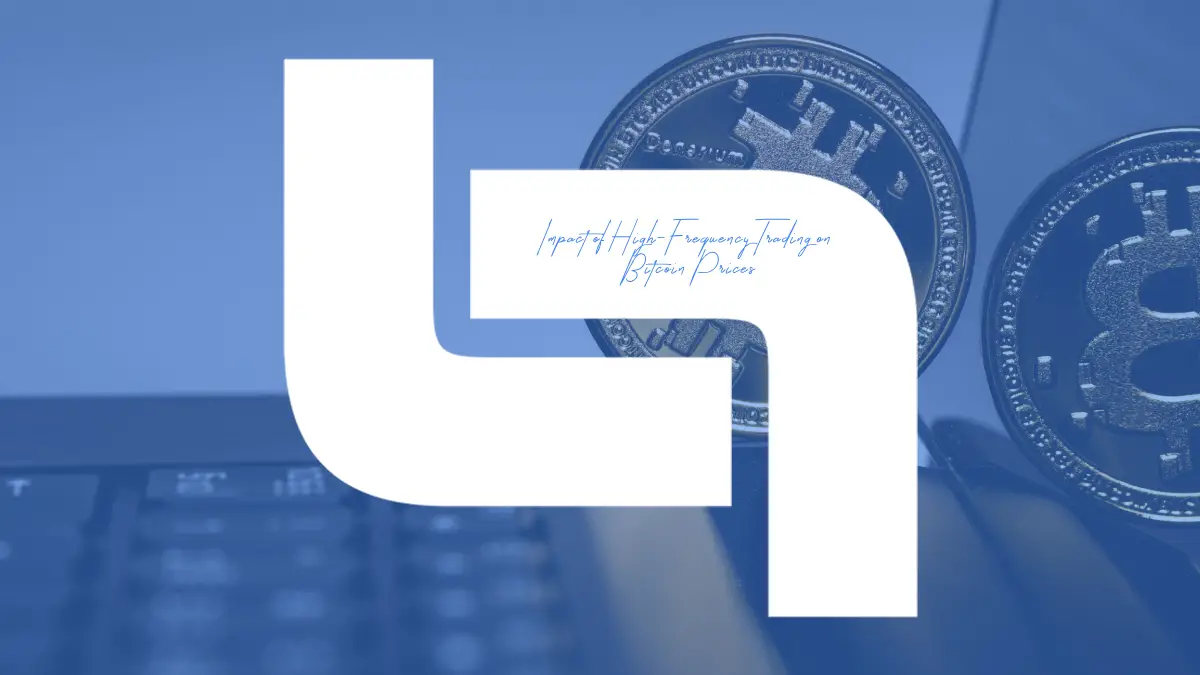In the fast-paced realm of cryptocurrency, the interplay between high-frequency trading (HFT) and Bitcoin prices is a captivating saga. This article delves into the nuanced relationship between these two phenomena, exploring how HFT algorithms shape Bitcoin’s price dynamics. From liquidity injection to volatility amplification, we uncover the intricacies of this complex interplay and examine strategies to navigate the ever-evolving landscape of Bitcoin trading. So, if you are planning to trade Bitcoin, you must have a reputable trading platform such as Immediate 1A Proair.

The Interplay: High-Frequency Trading and Bitcoin Prices
High-frequency trading (HFT) and Bitcoin prices share a complex relationship, often characterized by intricate dynamics. At its core, HFT involves the rapid execution of trades by algorithms, leveraging advanced technology to capitalize on fleeting market opportunities.
In the realm of Bitcoin, HFT algorithms operate within a decentralized landscape, where price movements are driven by a myriad of factors, including investor sentiment, regulatory developments, and macroeconomic trends.
The impact of HFT on Bitcoin prices manifests in several ways. Firstly, HFT contributes to liquidity injection, facilitating smoother trading activities and enhancing market efficiency.
By executing trades at lightning speed, HFT firms bolster liquidity levels, reducing bid-ask spreads and minimizing transaction costs for market participants. However, this liquidity provision is not without its drawbacks, as it can exacerbate price volatility during periods of market stress.
Moreover, HFT’s presence in Bitcoin markets amplifies price swings, leading to heightened volatility and increased risk for investors. The rapid-fire nature of HFT algorithms can trigger sudden price movements, known as flash crashes, causing panic among traders and exacerbating market instability. Additionally, the prevalence of HFT in Bitcoin trading introduces structural complexities, as market participants grapple with the challenges of navigating an ever-evolving landscape.
Despite these challenges, HFT also brings opportunities for market participants to capitalize on arbitrage opportunities and exploit inefficiencies.
However, it is imperative to approach HFT with caution and implement risk management strategies to mitigate potential downsides. By understanding the interplay between HFT and Bitcoin prices, investors can make informed decisions and navigate the volatile cryptocurrency markets more effectively.
The Ripple Effect: Unintended Consequences of HFT on Bitcoin
The rise of high-frequency trading (HFT) in Bitcoin markets has unleashed a ripple effect, causing unintended consequences that reverberate throughout the cryptocurrency ecosystem.
One such consequence is the emergence of flash crashes, abrupt and severe price declines triggered by HFT algorithms. These flash crashes can erode investor confidence and exacerbate market volatility, posing significant challenges for market participants.
Furthermore, HFT’s dominance in Bitcoin trading introduces systemic risks, as the rapid-fire nature of HFT algorithms can amplify market swings and lead to cascading sell-offs. This phenomenon, known as market whiplash, highlights the fragility of Bitcoin markets and underscores the need for robust risk management frameworks.
Additionally, HFT’s impact extends beyond price dynamics, shaping market structure and liquidity provision in unforeseen ways. The proliferation of HFT firms in Bitcoin markets has led to concerns about market manipulation and unfair trading practices, prompting calls for increased regulatory scrutiny and oversight.
In light of these challenges, market participants must remain vigilant and adapt to the evolving landscape of HFT-driven Bitcoin trading. By implementing robust risk management strategies and staying informed about market developments, investors can navigate the complexities of HFT and safeguard their investments against potential downturns.
Mitigating the Impact: Strategies for a Balanced Bitcoin Market
As high-frequency trading (HFT) continues to exert its influence on Bitcoin markets, stakeholders must explore strategies to foster a balanced and resilient trading environment.
One approach is to enhance transparency and promote fair trading practices, ensuring that all market participants have access to accurate and timely information. By increasing transparency, regulators can deter market manipulation and foster trust in Bitcoin markets.
Furthermore, regulatory reforms are needed to address the structural complexities introduced by HFT and mitigate systemic risks. Regulators should collaborate with industry stakeholders to develop tailored regulatory frameworks that strike a balance between innovation and market integrity.
These reforms may include implementing circuit breakers, imposing trading restrictions, and enhancing surveillance mechanisms to detect and prevent abusive trading practices.
In addition to regulatory measures, technological innovations can play a crucial role in mitigating the impact of HFT on Bitcoin markets. Market participants can leverage advanced analytics and machine learning algorithms to identify patterns and detect anomalous trading activities.
By harnessing the power of technology, investors can make more informed decisions and mitigate the risks associated with HFT-driven trading.
Ultimately, achieving a balanced Bitcoin market requires a collaborative effort from regulators, industry stakeholders, and market participants. By working together to address the challenges posed by HFT, we can foster a more resilient and equitable trading environment that benefits all stakeholders.

Conclusion
As we conclude our exploration of the impact of high-frequency trading on Bitcoin prices, it’s evident that HFT’s influence permeates the cryptocurrency market. From liquidity enhancement to unintended consequences, the interplay between HFT and Bitcoin prices underscores the need for informed decision-making and robust risk management strategies. By understanding these dynamics and collaborating across the industry, we can foster a more resilient and equitable Bitcoin ecosystem for all stakeholders.

